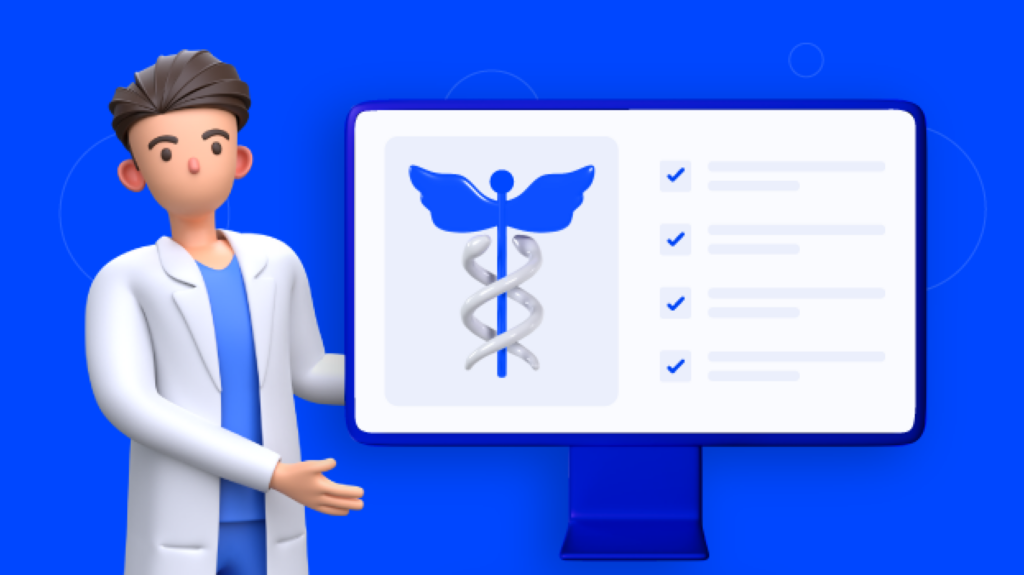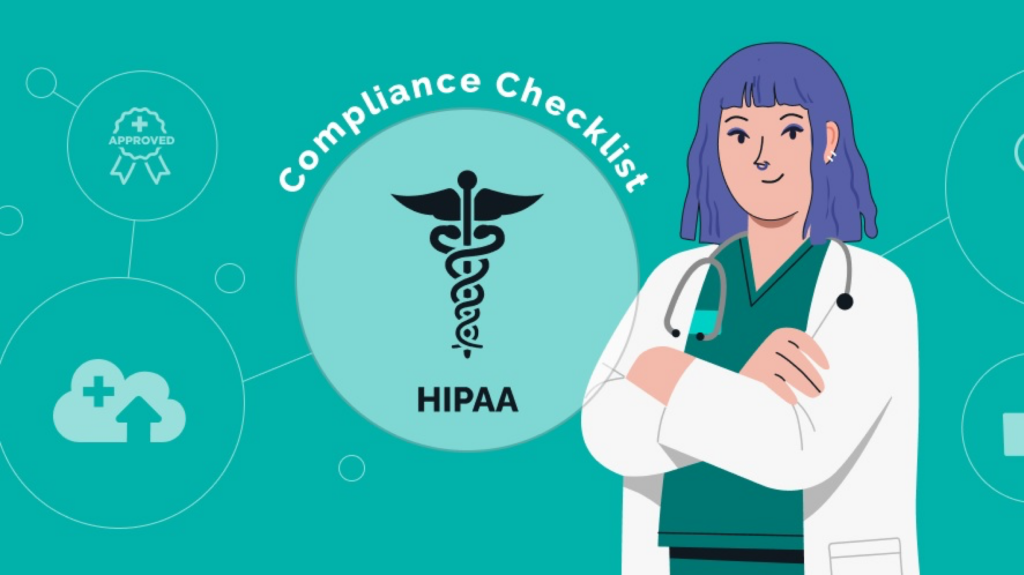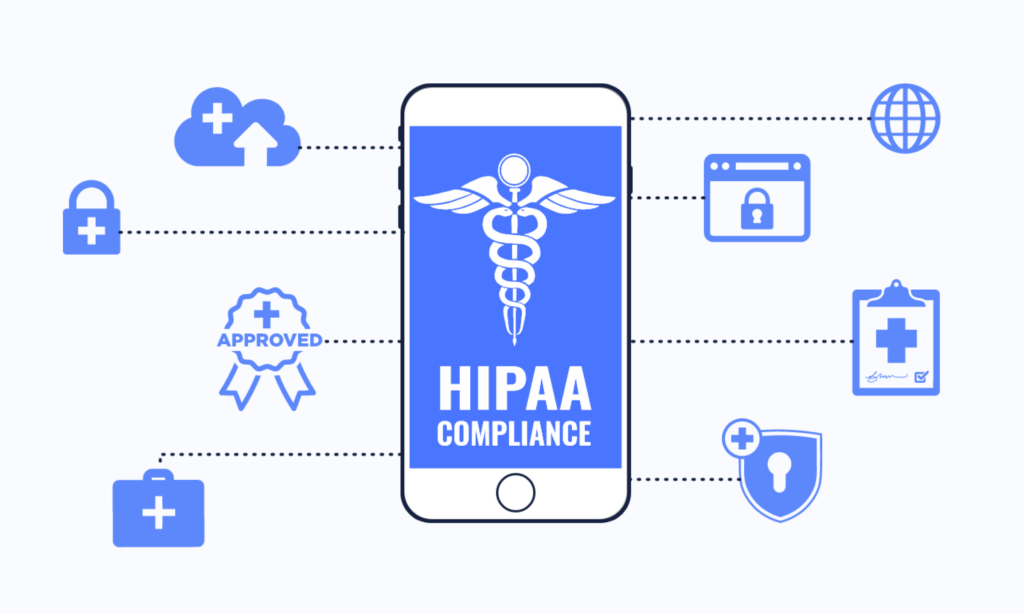Why is HIPAA-compliant software development so important for digital healthcare technologies?
Since 2020, healthcare data breaches have increased 42 percent, with 2022 marking the 12th straight year that healthcare reported more breaches than any other industry.
IBM says that a healthcare data breach costs an average of US$10.9 million, higher than any other industry and especially costly in the United States.
So how can healthcare software companies comply with HIPAA?
This checklist for HIPAA-compliant software development outlines the path to developing secure healthcare solutions. Use this checklist to develop and deliver HIPAA-compliant solutions more effectively.
Explore our checklist for secure and effective HIPAA-compliant software development to build your business trust in the healthcare industry.
What is HIPAA and Why Does It Matter?
The Health Insurance Portability and Accountability Act (HIPAA) is a federal law enacted in 1996 to protect sensitive patient data. HIPAA prioritizes preventing the exposure of personal health information (PHI) without the patient’s permission or awareness.
Software companies handling PHI must implement and adhere to physical, network, and procedural security protocols that ensure compliance with HIPAA regulations. Covered entities include those involved in healthcare delivery, operations, and transactions. Healthcare entities that access patient data to facilitate these activities must comply with all HIPAA regulations. Other entities, like subcontractors and affiliated business associates, must also meet these compliance standards.
Adherence to HIPAA regulations is required in healthcare software development to safeguard the privacy of personal health information and allow covered entities to adopt new technologies for better patient care. HIPAA violations may lead to civil monetary penalties ranging from $137 to $68,928 per violation or even criminal penalties for intentional violations.
Why Should Your Healthcare Software Be HIPAA-Compliant?

HIPAA compliance builds trust with providers and patients by demonstrating your commitment to safeguarding PHI privacy. A HIPAA-compliant software development strategy can help you expand your customer base among healthcare providers and payers committed to privacy and security compliance.
And legally, you must adhere to HIPAA regulations. Failure to employ HIPAA-compliant software development exposes risk to severe penalties and damage to your company’s brand reputation.
Checklist for HIPAA-Compliant Software Development and Best Execution Practices

This checklist of eight essential HIPAA compliance requirements will help you thoroughly assess your software product development processes to ensure user privacy and security.
1. Access Controls
The HIPAA Privacy Rule requires adherence to the minimum necessary standard. Software that holds sensitive patient data must manage who can view or change that information.
To adhere to this standard, healthcare organizations must implement technical policies and procedures for electronic information systems that maintain electronically protected health information. These policies and procedures allow access only to those persons or software programs granted access rights. By doing this, you can track and oversee the actions of individuals using your system.
For instance, while a doctor might have the right to read, write, and update a patient’s medical record, a lab assistant might only be allowed to make updates.
2. User Authorization
User authorization protects PHI to meet HIPAA compliance standards. It enforces robust authentication and authorization procedures for healthcare software, including generating individual user accounts, enforcing the use of strong passwords, and applying multi-factor authentication. These measures ensure that only authorized individuals have access to PHI, safeguarding sensitive health information and ensuring compliance with data protection regulations.
HIPAA-compliant software development must incorporate at least two of the following fundamental components for its access verification system:
- Knowledge-based: Users must provide distinct data that only they know. It can include personal information like passwords, security questions, or unique identifiers.
- Possession factor: This requires the user to present additional credentials, such as a security code or token generated by the system. This adds an extra layer of authentication to a HIPAA-compliant software development strategy, ensuring that only authorized individuals possessing the required device or token can access the software.
- Location-oriented: Incorporating IP address tracking or GPS verification ensures that users can only make requests if they are physically present in a specific approval location.
- Inherence-based: Users authenticate with biometric characteristics such as fingerprints, facial scans, or voice authentication for unique, unalterable, and highly secure identity confirmation.
3. Remediation Plan
HIPAA-compliant software development requires a detailed plan for what to do in case of a system breach or unauthorized data distribution. This plan should provide clear guidelines for notifying affected users and regulatory authorities. A well-defined and comprehensive response and remediation plan helps healthcare organizations mitigate the impact of security incidents and safeguard their systems and data.
To ensure adherence to these requirements during the HIPAA-compliant software development process, implement the following measures:
- Build an Action Plan: Develop a comprehensive plan that outlines the necessary steps to safeguard data. This includes identifying potential vulnerabilities, implementing security measures, and establishing protocols for incident response and recovery.
- Address Previous Breaches: Provide clear instructions to investigate and identify the causes of past security breaches. This helps you minimize loopholes in your HIPAA-compliant software development strategy.
- Draft Data Security Strategies: Implement robust strategies to safeguard data against potential threats. Employ encryption technologies, regularly update security systems, and conduct frequent vulnerability assessments to ensure an agile approach for HIPAA-compliant software development.
- Establish Protocols for Team Members: Define and distribute protocols that all team members must adopt to maintain data safety. This means guidelines for handling sensitive information, managing passwords, and controlling data access.
- Organize Insurance Policies and Procedures: Ensure that all relevant insurance policies and procedures are in place to manage data leaks effectively. A solid HIPAA-compliant software development approach must include appropriate coverage for data breaches, an understanding of the claims process, and up-to-date documentation.
4. Emergency mode
Ensure prompt handling of potential breaches for better HIPAA-compliant software development by establishing a responsive contingency team and plan. Enable staff members to swiftly identify, respond to, and mitigate the effects of security events and prevent further complications. The plan will serve as an organized, step-by-step guide for managing critical situations related to breaches or attacks. Consider the following actions:
- Provide Proper Training: Thoroughly educate members on the emergency mode operations plan. This includes providing comprehensive guidance on how to assess the severity of an emergency, implement the plan, and effectively communicate with all relevant stakeholders.
- Test Regularly: Test the emergency mode operations plan for your HIPAA-compliant software development activities to identify any areas requiring modification to enhance crisis preparedness.
- Release Official Guidelines: Develop an organized document that outlines all necessary communications with security personnel, insurance firms, and third-party service providers. This document will serve as a reliable reference during critical moments, enabling seamless engagement with the appropriate parties and bolstering your HIPAA-compliant software development success..
5. Activity Monitoring
Your healthcare software must include robust features for monitoring user interactions and managing access to PHI to enable superior security practices for confidential data. It should thoroughly examine network activity and promptly detect any irregularities that may indicate a security breach.
The following best practices establish a standardized benchmark to ensure compliance:
- Track activity and enforce regulations: The system must maintain a log of all user activities. This reliable record of user interactions helps detect abnormalities and uphold system accountability, transparency, and compliance with HIPAA and other regulatory standards.
- Categorize User Actions: A systematic, organized approach to keeping records of and analyzing user actions helps retrieve relevant information, enabling comprehensive reporting and informed decision-making in your HIPAA-compliant software development processes.
- Maintain Data Integrity: The system should record every instance when a file is accessed or altered, detailing the timing of the event and the individual responsible. This meticulous tracking enhances accountability and empowers better auditing and investigation of unauthorized or suspicious activities.
6. Data backup
Standardized HIPAA-compliant software development necessitates immediate backups. Be able to restore all records, files, and applications in case of system malfunctions, minimizing data loss caused by software glitches or hardware failures. Here are some practices to integrate into your software:
- Redundancy: Replicate software data in at least three instances, stored across at least two distinct sites. This redundancy guarantees the preservation and availability of critical data even during unforeseen failures or disasters.
- Encryption: To ensure optimal data security, software must include robust protocols and incorporate two-factor authentication. These advanced security measures safeguard the confidentiality and integrity of sensitive information, enhancing your HIPAA-compliant software development strategy.
- Monitoring: Establish robust monitoring capabilities to promptly detect anomalies or incidents. The system should be able to swiftly recover if something goes wrong while simultaneously notifying the relevant company teams. This proactive approach helps ensure that software is HIPAA-compliant and promotes quick response times to minimize potential disruptions in business operations.
7. Transmission Security
If your device or software transfers PHI over a network, you must ensure that the data transmitted over the network is encrypted with SSL/TLS. Due to HIPAA regulations, healthcare entities “must implement technical security measures to guard against unauthorized access to electronic protected health information being transmitted over an electronic communications network.”
To meet transmission security guidelines:
- Associate all specification needs with company policies to clearly show how they are handled. If a requirement is not applicable, the policies should also highlight it.
- Ensures all necessary encryption and decryption services using networking protocols are configured correctly.
- Verify the encryption by checking the redirects from HTTP to HTTPS, ensuring encryption between each resource, and conducting an end-to-end assessment of data movement.
8. Business Associate Agreements
The last essential step in HIPAA-compliant software development is signing a Business Associate Agreement with the hosting vendors. Every vendor handling your sensitive health data must have this agreement in place.
Many hosting providers must become more familiar with HIPAA requirements and may hesitate to agree to the terms, as it could conflict with their business operations. Our suggestion for healthcare organizations is to utilize cloud storage with reliable providers that comply with HIPAA regulations, such as:
- Amazon Web Services
- Google Cloud Platform
- Microsoft Azure
Requirements of HIPAA-Compliance Rules

Healthcare software development teams need to understand HIPAA-compliance requirements. Four key HIPAA compliance rules ensure the transparency of data flow when storing and transmitting healthcare information.
1. HIPAA Privacy Rule
The HIPAA Privacy Rule protects medical records and other personal PHI from unauthorized access and misuse. It regulates the transmission and sharing of health-related data, with the aim of minimizing the risks associated with fraud and theft. This rule also grants patients specific rights and control over their health data, including the ability to access, obtain copies of, and request corrections to their information. These measures establish a formal framework to safeguard sensitive health information and uphold patient privacy standards for superior HIPAA-compliant software development.
2. HIPAA Security Rule
The Security Rule sets guidelines for protecting electronic protected health information (ePHI). HIPAA-compliant software development practices must integrate appropriate administrative, physical, and technical safeguards to ensure the confidentiality, integrity, and security of ePHI.
3. HIPAA Enforcement Rule
The Enforcement Rule establishes the necessary procedures for the Department of Health and Human Services (HHS) to enforce the processes for HIPAA-compliant software development. This crucial regulatory framework empowers HHS regulators to evaluate liability and impose fines in cases of non-compliance with HIPAA regulations.
4. Omnibus Rule
The Omnibus Rule requires entities to inform relevant parties of a breach that involves unsecured PHI in either paper or electronic form. HHS provides guidelines to define a breach based on the nature and amount of the PHI involved, how it was disclosed, whether the data was accessed, and the level of risk exposure. It also expands the scope of penalties for non-compliance to include business associates and introduces new limitations on using PHI. This ensures the fulfillment of compulsory requirements for HIPAA-compliant software development.
Feeling Overwhelmed? KMS Healthcare Is Here To Help With Your HIPAA-Compliant Software Devlopment

Use this checklist to advance your healthcare software HIPAA compliance. This is particularly helpful for medium and small-sized businesses, where limited skilled personnel, budgetary constraints, and a lack of resources hinder establishing a HIPAA-compliant software development approach.
Overcome these challenges with assistance from a reliable healthcare software outsourcing provider with ample healthcare industry and development expertise. Such a partnership can guide you through the complex process of HIPAA-compliant software development, ensuring the utmost confidentiality and security for your products and services.
With 14 years of experience in outsourced healthcare software development, the KMS Healthcare team will provide practical advice and HIPAA compliance software development practices. We commit to delivering exceptional solutions tailored to the unique needs of your healthcare customers.

We will assist you every step of the way. Contact us now to embark on your HIPAA-compliant software development journey.